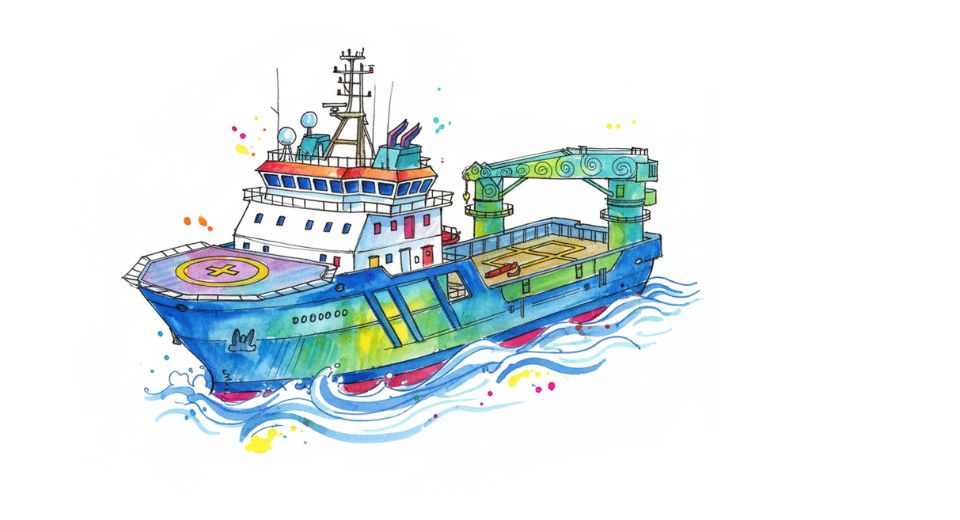
Sep 22, 2025

In the latest perspective offered by Metastat Insight, the offshore support vessel market is being defined as a fundamental part of today's maritime operations and as closely related as it is to offshore industries' operation that impact energy, trade, and infrastructure on the world stage. Everything from exploration to building offshore ventures depends on stable sea logistics to a great extent. From hauling cargo to supporting specialized marine operations, these vessels have emerged as a key enabler of global activity. The increased focus on efficiency and safety in offshore environments places the spotlight on the growing importance of this business, rendering it more relevant than ever to industry participants.
Offshore operations are increasingly pushing boundaries, heading deeper and into more adverse conditions. This development has created demand for vessel types capable of undertaking multilateral operations, ranging from anchor handling and platform supply to subsea maintenance. Geographical and weather constraints like weather, offshore conditions, and the need for complex infrastructure requirements have made specialist marine assets unavoidable. The offshore support ship market addresses this demand by offering advanced solutions that reduce downtime, enhance safety, and streamline offshore logistics. In this way, it offers a vital niche which traditional shipping is unable to fulfill due to the unique requirements of offshore environments.
They serve as the logistical backbone of offshore operations. They transport rigs and platforms with equipment, fuel, and supplies as well as provide emergency response, subsea inspection, and construction activities.
Other than supply, their versatility allows them to switch between various functions depending on operational requirements. What sets them apart is working under tough offshore conditions yet still ensuring reliability and efficiency. Such versatility reduces project delays and operational risk, making them worth deploying for offshore development and maintenance. Moreover, design innovations and onboard technology have enhanced fuel economy, handling, and environmental regulatory compliance, adding to their value further.
Offshore support vessel sales have evolved from plain service ships to an industry marked by specialization and technology. Early models were just supply work, but continuous technological improvements incorporated dynamic positioning systems, automation, and creative propulsion.
This innovation transformed capabilities to enable precision work in tough environments. Adoption expanded as offshore business diversified, and vessels well-adapted to deep-water exploration and subsea intervention entered fleets. Industry feedback and field practice have consistently driven design advancements, each successive generation delivering improved safety, efficiency, and environmental performance. The trajectory traces a progression from quiet utility to full-fledged strategic importance in offshore industries.
Geographic adoption patterns vary, reflecting regional offshore activity and infrastructure investment. Developed markets with large offshore infrastructure bases have stable demand, while developing countries have shown expanding interest as exploration and development are on the rise. Nations with expanding energy sectors, particularly those seeking supply source diversification, are increasingly investing in offshore supporting solutions.
Offshore coastal regions with active infrastructure and subsea developments are also facing rising vessel utilization.
Such a balance between mature and emerging adoption emphasizes the global relevance of the market for offshore support vessels, with opportunities delineated across established strongholds and high-opportunity frontiers.
Despite very high applicability, the sector is bound by limitations that hamper operations and investment. Costs of advanced vessel design and maintenance remain steep, and safety and environment compliance regimes impose compliance pressure. Maritime services industry competition also constricts margins. There is, however, also considerable opportunity in these conditions.
Technology change continues to unleash efficiency gains with solutions that reduce emissions and costs of operation.
Offshore project development in the less developed regions will be anticipated to expand the demand base. Conversion into digital technologies, such as predictive maintenance and smart fleet management, presents other avenues for growth. With offshore industries embracing sustainability and digitalization, vessels conceived to achieve these purposes are likely to thrive.
The offshore support vessel market, as brought to the fore by Metastat Insight, ranks high in global agendas overall. The mounting emphasis on green energy, supply security, and shipping efficiency puts stakes on reliable offshore logistics. These vessels are truly the direct cause of cleaner seas, safer seas, and more efficient seas, and are part of larger movements toward smart resource development and digitalization. Their evolving capabilities underpin existing sectors while pushing new horizons in offshore construction and renewable energy. Where innovation meets need, the sector illustrates how specialist sea-based assets are reshaping the future of offshore operations.
Drop us an email at:
Call us on:
+1 5186502376
+91 73850 57479